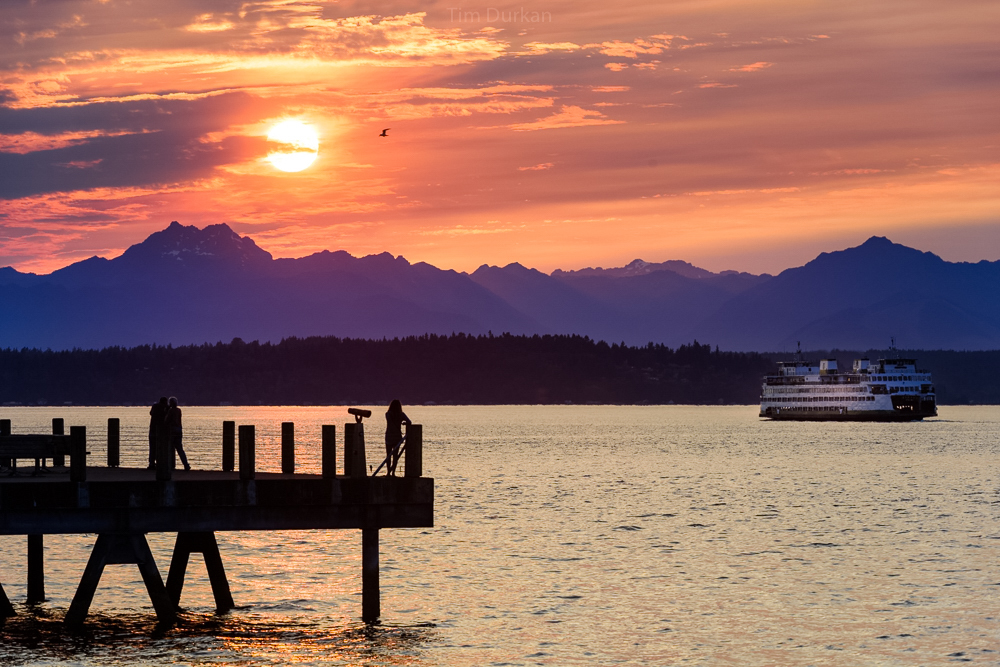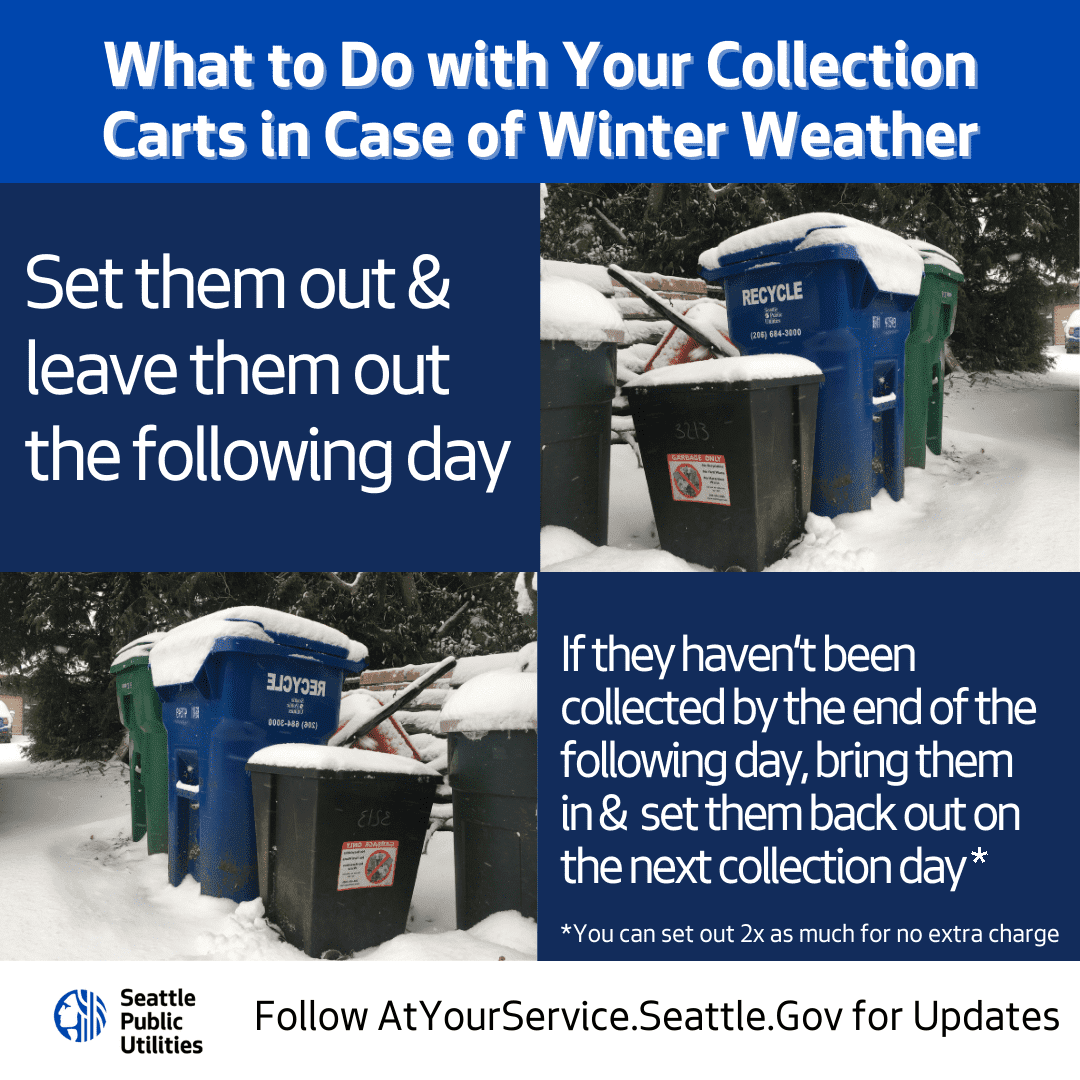
Seattle Public Utilities (SPU) is offering these winter tips so you can be ready for what the Pacific Northwest might bring to households and businesses this season – cold temperatures, ice, and snow.
In this blog, we’ll discuss protecting your home and water pipes, as well as when and how to set out recycling, compost, and garbage for collection if there is a delay. We’ll also provide ways to stay informed when winter keeps you at home.
First, let’s consider what to do overall when the forecast calls for freezing temperatures.

Let’s say snow, ice, and other hazardous conditions have arrived. You might wonder: “Will my garbage get picked up?”

SPU values safety, especially with garbage collection, and stays in close contact with our contracted waste and recycling hauling companies.
If winter makes it unsafe to collect your solid waste, your pickup could be delayed for a day or more. If a delay occurs, SPU will notify affected customers via:
- SPU’s website
- AlertSeattle notifications
- Recycle It App
- Our social media on X (formerly Twitter), Facebook, Instagram, and Nextdoor
- Our At Your Service blog (updates throughout the weather event)
Protecting your water pipes from freezing – before cold temperatures arrive – is important so they won’t burst and cause major damage to your home and property.
Here’s what to do BEFORE winter weather arrives or an emergency happens:
- Insulate pipes located in attics, crawl spaces, basements, near outer walls, and outside as they are susceptible to freezing.
- Drain and remove outdoor hoses.
- Cover outdoor faucets.
- Sign up for emergency notifications at AlertSeattle.
- Check your water heater for wet spots on the floor or a rusted tank.
- Know where your water shutoff is located.
- Follow SPU for updates and delays on collection services.
Here’s what to do DURING winter weather:
- Protect indoor sink pipes against exterior walls by opening under-sink cabinet doors to allow indoor heat to circulate.
- Allow one indoor faucet to slowly drip cold water. Select the faucet that is the farthest from your front door. Do not leave water running in unoccupied areas.
- Set your thermostat no lower than 55 degrees (day or night and even if you are away from your house).
- If possible, safely clear ice and snow away from catch basins outside. This will allow water to drain and possibly reduce icy conditions.
Here’s what to do if your PIPES FREEZE (but haven’t burst):
If you turn on the water at your tap and a trickle or no water comes out, your pipes may be frozen. Follow these steps to stay safe and minimize damage.
- Locate the pipe’s suspected frozen area. Likely places include pipes running against exterior walls or where your water service enters your home through the foundation.
- Keep the faucet open. As you treat the frozen pipe and the frozen area begins to melt, water will begin to flow through the frozen area. Running water through the pipe will help melt more ice in the pipe.
- Apply heat to the section of pipe using towels soaked in hot water wrapped around the pipe, an electric heating pad wrapped around the pipe, or an electric hair dryer.
- Apply heat until full water pressure is restored. If you can’t locate the frozen area, if it’s inaccessible, or you can’t thaw the pipe, call a licensed plumber.
- Check all other faucets in your home to find out if you have additional frozen pipes. If one pipe freezes, others may freeze, too.

What to do if your pipes burst:
A burst pipe can be scary. Follow these steps to minimize damage and get the situation under control.
- Immediately close the main shut-off valve to stop flooding. The shut-off valve can be indoors or outdoors, usually in a basement, crawl space, or garage. Ideally, you’ll have located this BEFORE the pipe has burst as part of your winter weather preparation.
- If you cannot turn off the main shut-off valve, SPU customers can call (206) 386-1800 and a crew member will turn off the water at the meter for a service charge. This phone number is staffed 24/7.
- Call a plumber to repair or replace the damaged section of pipe as soon as possible.
More ways to stay informed during winter weather
Learn more about how you can get prepared, be safe, and stay informed this winter.
For more information on other City of Seattle services, including updates on current services, interruptions, and alerts, visit these resources:
- AlertSeattle – the City of Seattle’s official emergency alert system.
- Get information about the City’s Winter Storm Response.
- King County Winter Weather Information (includes cold weather shelters, transit alerts, road alerts, and school closures).